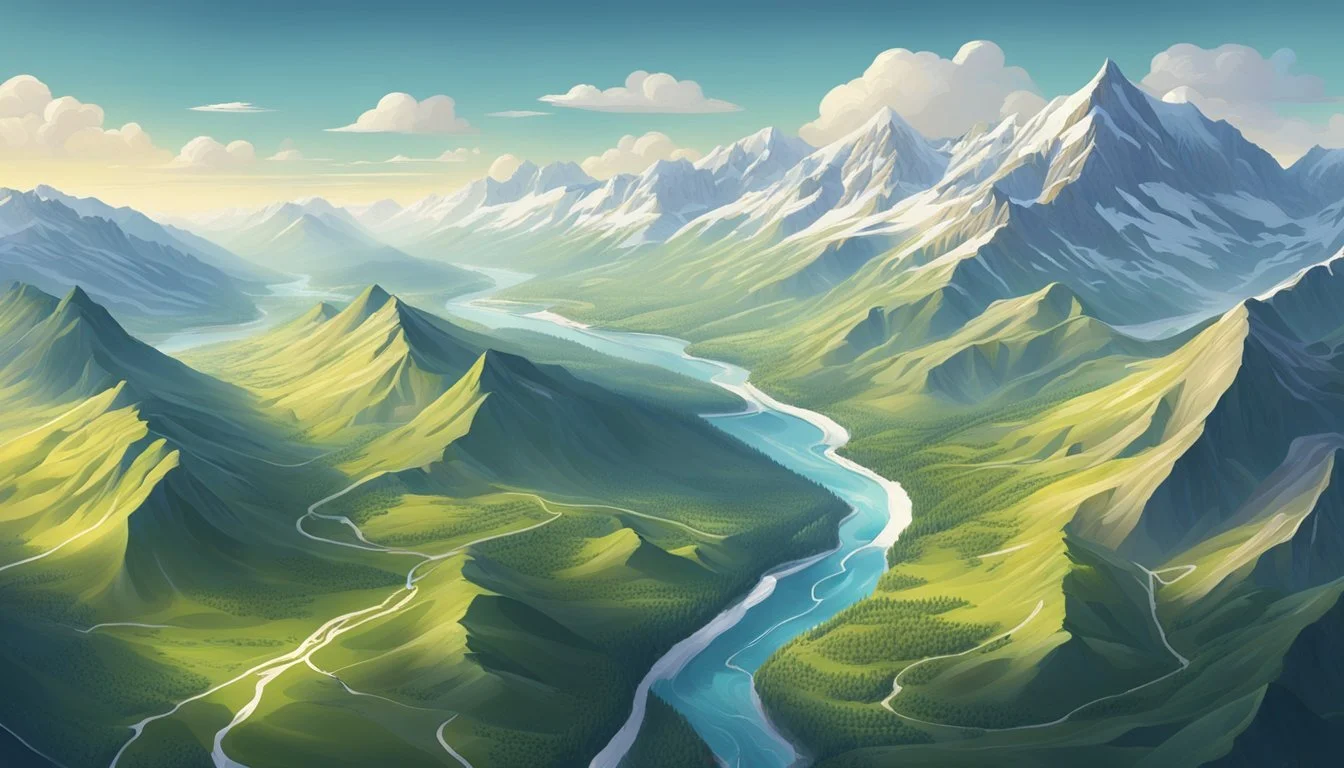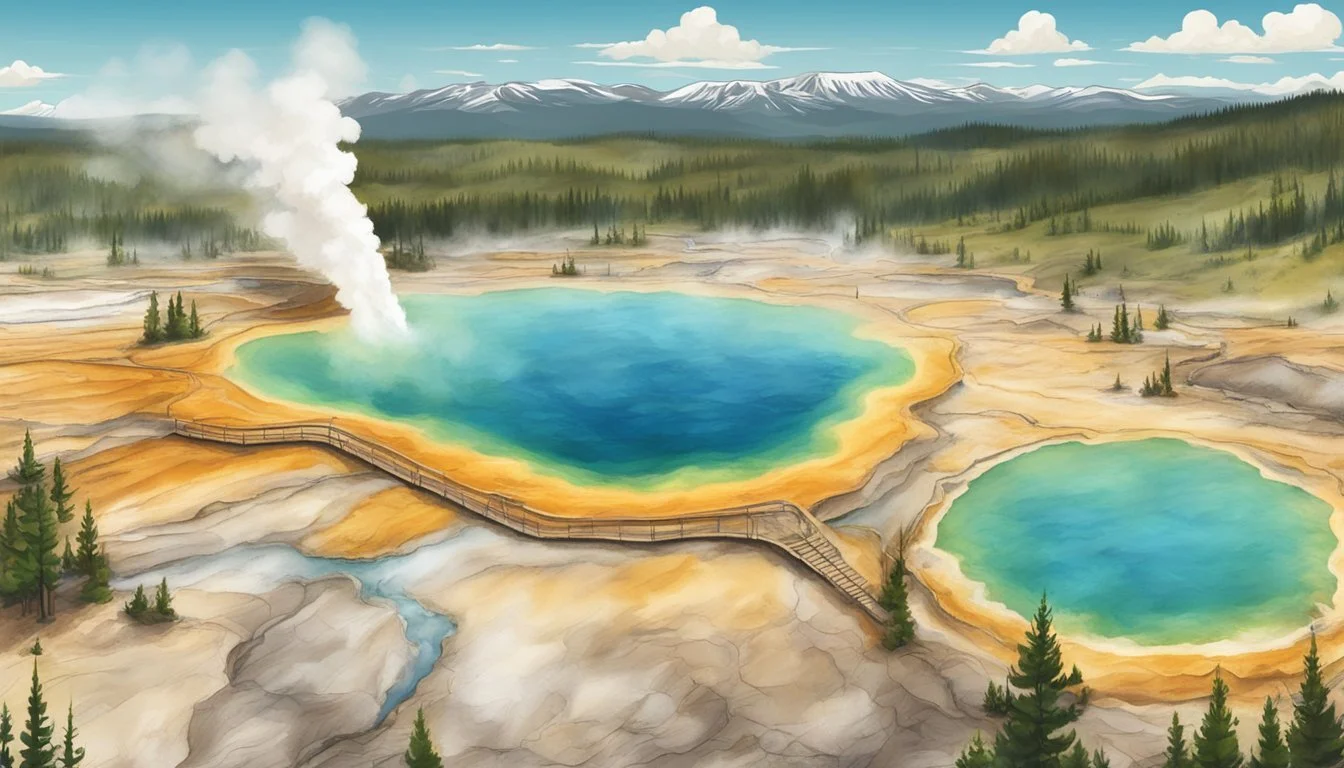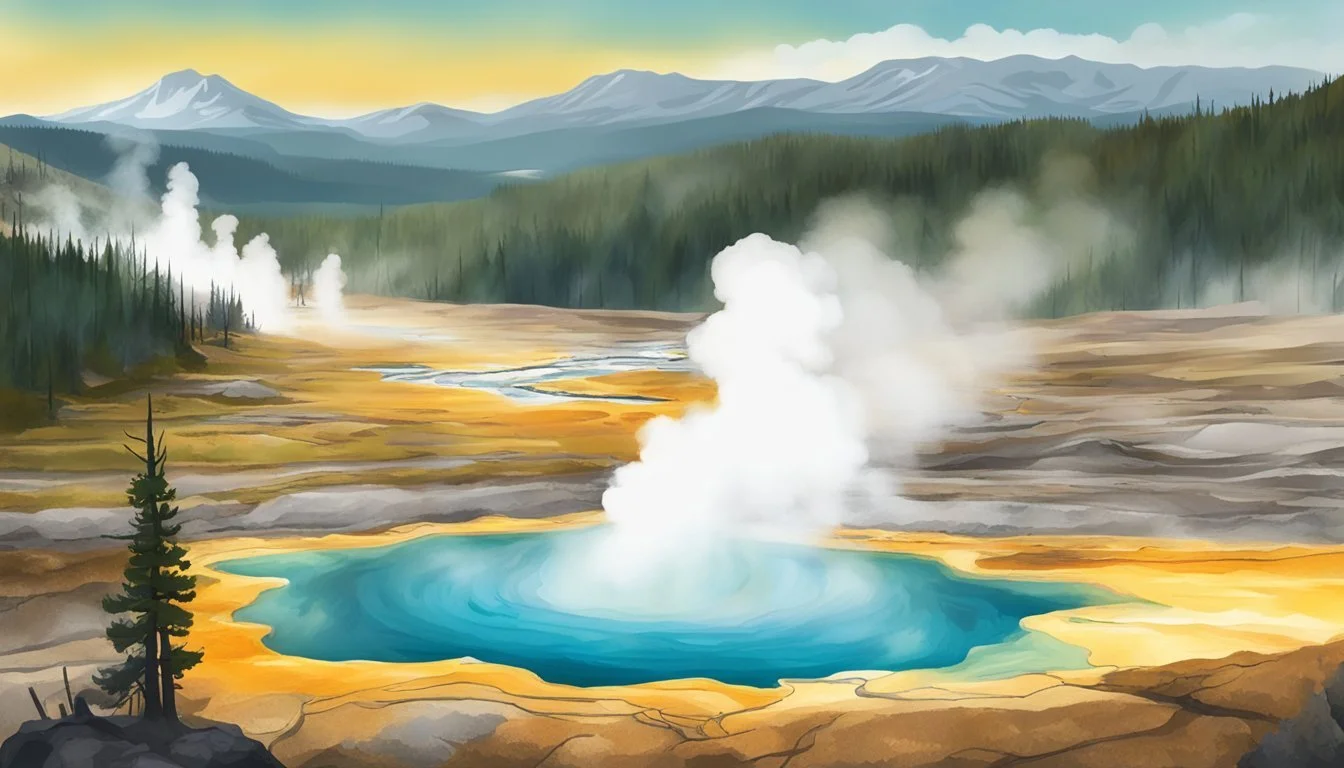Discover the Magic: Where Is Yellowstone Show Filmed? Real Locations Revealed!
Yellowstone, the hit TV series starring Kevin Costner as John Dutton, captivates viewers with its stunning cinematography and rugged Western landscapes. The show is primarily filmed in Montana, with key locations including the Chief Joseph Ranch in Darby, which serves as the iconic Yellowstone Dutton Ranch. This working guest ranch provides the perfect backdrop for the Dutton family's sprawling cattle operation and serves as a central filming location for the series.
Creator Taylor Sheridan chose Montana as the primary setting to authentically capture the essence of Big Sky country. The show's production team carefully selects locations that showcase the state's natural beauty, from sweeping mountain vistas to pristine rivers and valleys. While earlier seasons included filming in Utah, production has since shifted entirely to Montana, allowing for a more immersive and genuine portrayal of the region.
In addition to the Chief Joseph Ranch, Yellowstone utilizes other real-life Montana locations to bring the story to life. The Montana State Capitol building in Helena and the Crow Indian Reservation have both been featured in the series, adding depth and authenticity to the show's depiction of Western life and politics. These carefully chosen settings contribute to the show's visual appeal and help create the immersive world that has captivated millions of viewers.
Overview of Filming Locations
Yellowstone's stunning visuals are captured across diverse landscapes, primarily in Montana and Utah. The show's production team carefully selects locations that authentically represent the rugged beauty of the American West.
Montana as a Pivotal Setting
Montana serves as the heart of Yellowstone's filming locations. The Chief Joseph Ranch in Darby doubles as the iconic Yellowstone Dutton Ranch. This working cattle ranch offers breathtaking views of the Bitterroot Valley and Trapper Peak.
Helena, the state capital, lends its Montana State Capitol building for political scenes. Missoula and its surrounding areas provide additional backdrops for the show's dramatic moments.
The Daly Mansion in Hamilton occasionally features as a grand estate. These Montana locations contribute to the show's authentic western atmosphere.
Use of Real Ranches
Yellowstone utilizes actual working ranches to maintain authenticity. The Chief Joseph Ranch is not just a set but a functioning guest ranch when not used for filming.
The 6666 Ranch in Texas, featured in later seasons, is a real-life historic cattle ranch. This adds depth to the show's portrayal of ranch life.
Shelton Ranch near Darby also serves as a filming location, offering varied terrain for different scenes. These real ranches provide genuine cowboy culture and stunning natural scenery.
Utah's Diverse Landscapes
In earlier seasons, Utah played a significant role in Yellowstone's production. Park City's mountainous terrain served as a stand-in for Montana landscapes.
Spanish Fork and Ogden provided urban and rural settings. The Utah Film Studio in Park City housed interior sets for the show.
Utah's varied geography allowed the production team to capture diverse scenes, from cityscapes to rugged mountain vistas. This flexibility helped create the show's expansive visual world.
Key Locations Explored
Yellowstone's stunning visuals come from carefully chosen filming locations across Montana. These settings bring the show's fictional world to life through authentic Western landscapes and landmarks.
Chief Joseph Ranch and Its Significance
The Chief Joseph Ranch in Darby, Montana serves as the iconic Yellowstone Dutton Ranch. This working guest ranch spans over 2,500 acres and features prominently in the series. Its picturesque log mansion and rustic barns provide the perfect backdrop for the Dutton family's home base.
The ranch keeps Yellowstone signage up year-round, allowing fans to capture photos of this key location. Situated in the Bitterroot Valley with views of Trapper Peak, the Chief Joseph Ranch is a National Historic Landmark with roots tracing back to the Lewis and Clark expedition.
Crow Indian Reservation Depictions
While the show's Broken Rock Reservation is fictional, scenes depicting Native American lands are filmed on the real Crow Indian Reservation in southern Montana. This vast territory covers nearly 2.3 million acres and provides an authentic setting for storylines involving Thomas Rainwater and tribal conflicts.
The reservation's rugged prairies, rolling hills, and dramatic mountain vistas lend credibility to the show's portrayal of reservation life. By filming on actual tribal lands, Yellowstone honors the region's indigenous heritage and highlights issues facing Native communities today.
Urban Areas and Infrastructure
Yellowstone incorporates several Montana cities and landmarks to round out its fictional world. The Missoula County Courthouse appears as a stand-in for government buildings. Helena, the state capital, provides urban backdrops and infrastructure shots.
The Montana State Capitol in Helena features in political scenes. Nearby Hamilton and its historic Daly Mansion offer additional period-appropriate locations. The city of Ogden, Utah also fills in for some urban settings. These diverse locations allow Yellowstone to depict both rural ranch life and the encroaching modern world threatening the Duttons' way of life.
Behind the Scenes
The production of Yellowstone involves intricate set design and collaboration with local businesses to create an authentic western atmosphere. Attention to detail and community engagement are key elements in bringing the show's world to life.
Set Design and Construction
The Yellowstone production team meticulously crafts sets to capture the essence of Montana ranch life. They transform existing locations like the Chief Joseph Ranch into the iconic Dutton family home. Prop masters source genuine western artifacts to adorn interiors.
Custom-built structures complement natural landscapes. The crew constructs temporary buildings that seamlessly blend with the environment. This includes barns, bunkhouses, and other ranch facilities.
Careful lighting design enhances the visual appeal of both indoor and outdoor scenes. Cinematographers utilize natural light when possible to maintain authenticity. They also employ specialized equipment to capture the vast Montana skies and rugged terrain.
Local Business Utilization
Yellowstone's production significantly impacts local economies in filming areas. The show collaborates with Montana businesses for various services and supplies. This includes catering, accommodations, and transportation.
Local restaurants like Ruby's Café benefit from cast and crew patronage. In Texas, Mary's Brazos Cafe has been featured in filming. The production team often rents equipment from area suppliers, boosting the local rental industry.
Montana's film-friendly policies have encouraged the show to increase its presence in the state. This has led to partnerships with organizations like the Montana Livestock Association for authentic livestock scenes.
The production also utilizes local medical facilities when needed, such as the Community Medical Center in Missoula. These collaborations ensure the safety of cast and crew while supporting local healthcare providers.
Cast and Characters
Yellowstone features an ensemble cast of talented actors bringing the Dutton family saga to life. The performances of both lead and supporting actors have been crucial in establishing the show's gritty, intense atmosphere.
Main Cast Contributions
Kevin Costner anchors the series as John Dutton, the patriarch of the Dutton family. His portrayal combines steely determination with moments of vulnerability. Kelly Reilly shines as Beth Dutton, John's fiercely loyal daughter. Her sharp-tongued, complex character has become a fan favorite.
Luke Grimes plays Kayce Dutton, John's youngest son, bringing depth to a character torn between family loyalty and his own path. Wes Bentley portrays Jamie Dutton, the ambitious adopted son, with nuanced intensity.
Cole Hauser's Rip Wheeler, the ranch foreman and Beth's love interest, has emerged as a standout character. His stoic demeanor and unwavering loyalty to the Duttons make him integral to the show's dynamics.
Supporting Cast Highlight
The supporting cast adds richness to the Yellowstone world. Kelsey Asbille plays Monica Dutton, Kayce's wife, navigating the complexities of being part of the Dutton family while honoring her Native American heritage.
Gil Birmingham portrays Thomas Rainwater, chairman of the Broken Rock Reservation, bringing gravitas to a character often at odds with the Duttons. Brecken Merrill, as young Tate Dutton, represents the future of the family legacy.
Jefferson White's Jimmy Hurdstrom provides comic relief and heart as a ranch hand finding his place. Danny Huston's Dan Jenkins and Josh Holloway's Roarke Morris have been memorable antagonists, challenging the Duttons' power.
Cultural Impact
Yellowstone's popularity has significantly influenced tourism and media representation of the American West. The show's stunning visuals and compelling storylines have captivated audiences, leading to widespread effects beyond entertainment.
Influence on Tourism
Yellowstone's success has sparked a surge in tourism to its filming locations. Fans are flocking to Montana's Bitterroot Valley and other scenic areas featured in the show. Local businesses, including hotels, restaurants, and tour operators, have seen increased revenue due to this influx of visitors.
The "Yellowstone effect" has particularly benefited the Apsaalooke Nights Casino on the Crow Indian Reservation, where some scenes were filmed. Big Sky Country's rugged landscapes and ranch properties have become popular destinations for those seeking to experience the show's atmosphere firsthand.
Representation in Media
Yellowstone has reshaped media portrayals of the modern American West. Creator Taylor Sheridan's authentic depiction of ranching life and Native American issues has garnered critical acclaim. The show's success on the Paramount Network led to the development of prequels like 1883 and 1923, expanding the Yellowstone universe.
Streaming platform Paramount+ has benefited from the show's popularity, with Yellowstone Season 5 driving subscriptions. The series has also influenced other productions, inspiring a renewed interest in Western-themed content across various media formats.
Production Aspects
"Yellowstone" employs stunning cinematography and meticulous location scouting to capture the essence of the American West. These elements are crucial in bringing the show's rugged landscapes and intense drama to life.
Cinematography Techniques
"Yellowstone" utilizes wide-angle shots to showcase the expansive vistas of Montana and Utah. Aerial photography captures sweeping views of mountains, valleys, and ranches. The show's cinematographers employ natural lighting to enhance the authenticity of outdoor scenes. Close-ups are used effectively to convey characters' emotions and reactions. Handheld camera work adds dynamism to action sequences and heated confrontations.
Location Scouting Process
Taylor Sheridan and his team prioritize finding locations that embody the spirit of Big Sky Country. Chief Joseph Ranch in Darby, Montana serves as the iconic Dutton Ranch. The production initially filmed in Utah, using Park City, Heber City, and Oakley as key locations. Grantsville and Logan also featured prominently in early seasons. From season 4 onwards, filming shifted primarily to Montana. Sheridan acquired a 40,000-square-foot facility near Missoula for production purposes. The team scouts areas around Yellowstone National Park and the Livingston Field Office for authentic Western landscapes.






